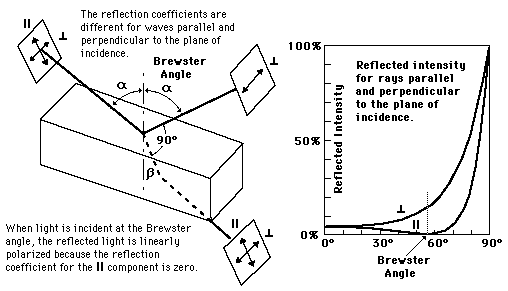
Polarization concepts
| HyperPhysics***** Light and Vision | R Nave |
 |
Index Polarization concepts | ||
|
Go Back |
Polarization by Reflection
|
Index Polarization concepts | |||
|
Go Back |
Reflected IntensityNote: the reflection coefficients used here are the intensities and not the amplitudes as used in the usual presentation of the Fresnel equations. That is, these reflection coefficients are the square of those in the Fresnel expressions.
|
Index Polarization concepts | ||
|
Go Back |
Polarization by Scattering
|
Index Polarization concepts | |||
|
Go Back |